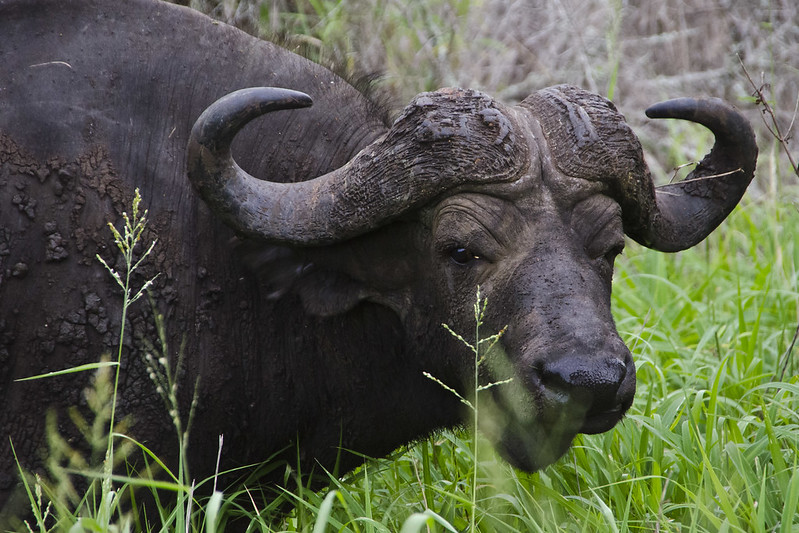Interesting facts about the African Buffalo.
Welcome to the untamed wilderness of Africa, where the African Buffalo roams, embodying strength, resilience, and a captivating presence. In this exploration with Abunda Discoveries Uganda, we delve into the intriguing world of these magnificent creatures, uncovering interesting facts about the African Buffalo in the continent’s ecosystems.
A Proud Member of the “Big Five”
The African Buffalo is a proud member of the “Big Five,” a term coined by hunters to represent the most challenging and majestic animals to encounter on foot. These iconic species include the lion, leopard, rhinoceros, elephant, and, of course, the formidable African Buffalo.
Synced Societal Structures
Buffaloes are social animals, forming close-knit groups known as herds. These herds often consist of females and their calves, creating a network of familial bonds. Within these groups, buffaloes display intricate social hierarchies, with dominant individuals leading the way.
Formidable Horns
One of the most distinctive features of the African Buffalo is its formidable horns. Both males and females possess these impressive curved structures, which are used for defense against predators and, occasionally, in intra-species conflicts. The horns span across the forehead and curve downward, creating a majestic and imposing appearance.
Water-loving Giants
Unlike some other large herbivores, African Buffaloes are not averse to water. They are often found near rivers and lakes, where they can cool off, escape predators, and indulge in a good wallow. These water-loving giants are excellent swimmers, showcasing their adaptability to various environments.
Cooperative Defense Mechanisms
African Buffaloes have developed remarkable cooperative defense mechanisms against predators, particularly lions. When a member of the herd is under threat, others will rally together to form a united front, creating a formidable barrier of horns. This collective defense strategy often deters predators and ensures the safety of the group.
Ecological Engineers
Buffaloes play a crucial role in shaping their ecosystems. Their grazing and wallowing behaviors have significant impacts on vegetation and water sources. By creating wallows, they contribute to the maintenance of watering holes, benefiting a multitude of other species in the process.
Silent Communication
Communication among buffaloes involves various vocalizations, including grunts, snorts, and calls. However, they are also adept at silent communication through body language. This includes subtle gestures, such as ear and tail movements, which convey important messages within the herd.
Symbolism in African Culture
The African Buffalo holds cultural significance in many African societies. It is often associated with strength, resilience, and a deep connection to the land. In some cultures, the buffalo is a symbol of protection and communal unity.
Conclusion: The African Buffalo – A Living Testament to Wilderness Majesty
As we journey through the savannahs and grasslands with Abunda Discoveries Uganda, the African Buffalo emerges as a testament to the untamed majesty of the African wilderness. From their cooperative social structures to their powerful horns and ecological impact, these magnificent creatures are an integral part of the rich tapestry of African wildlife. Join us in celebrating the remarkable world of the African Buffalo, where each encounter tells a story of strength, survival, and the enduring spirit of the wild.




